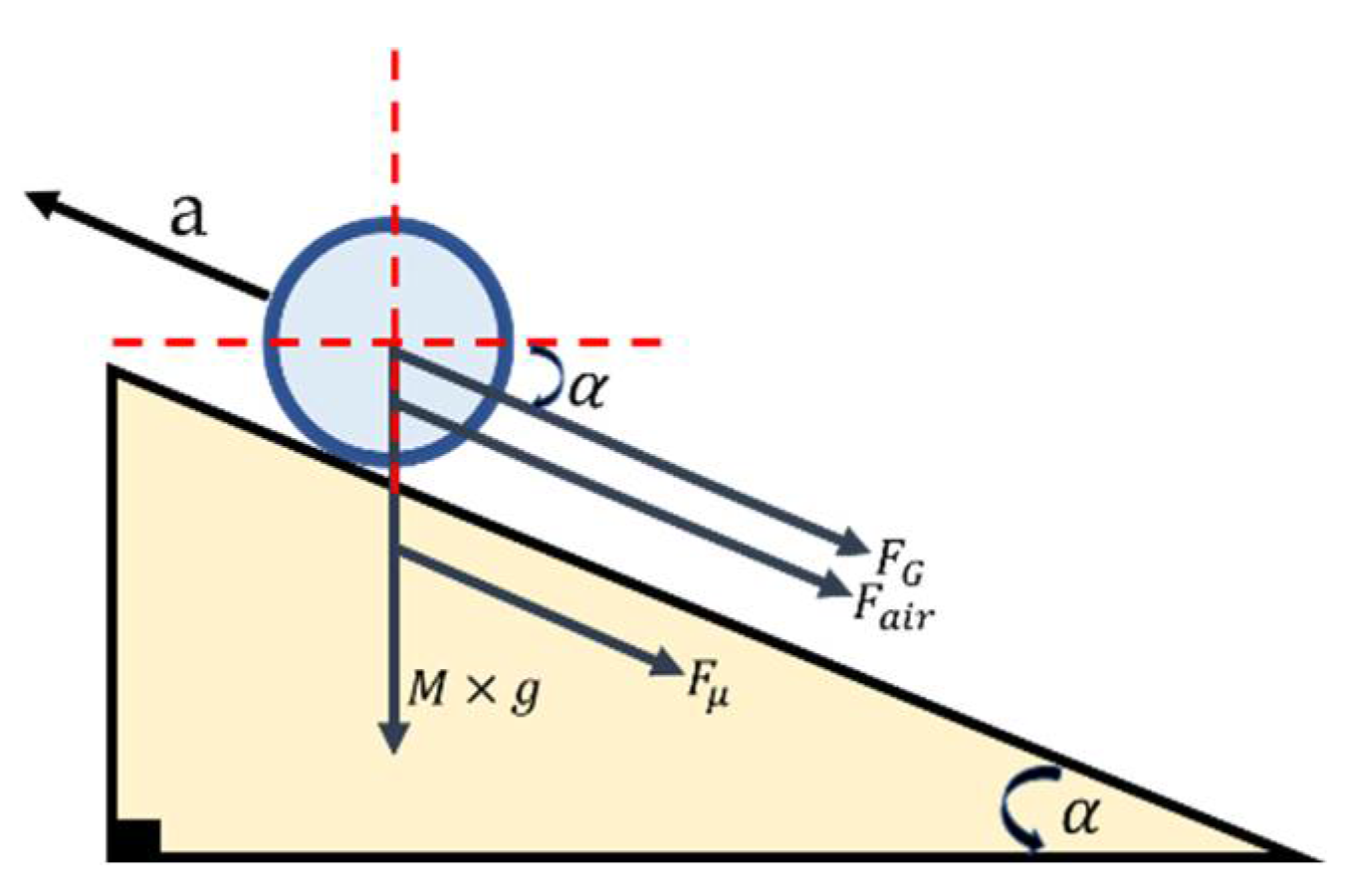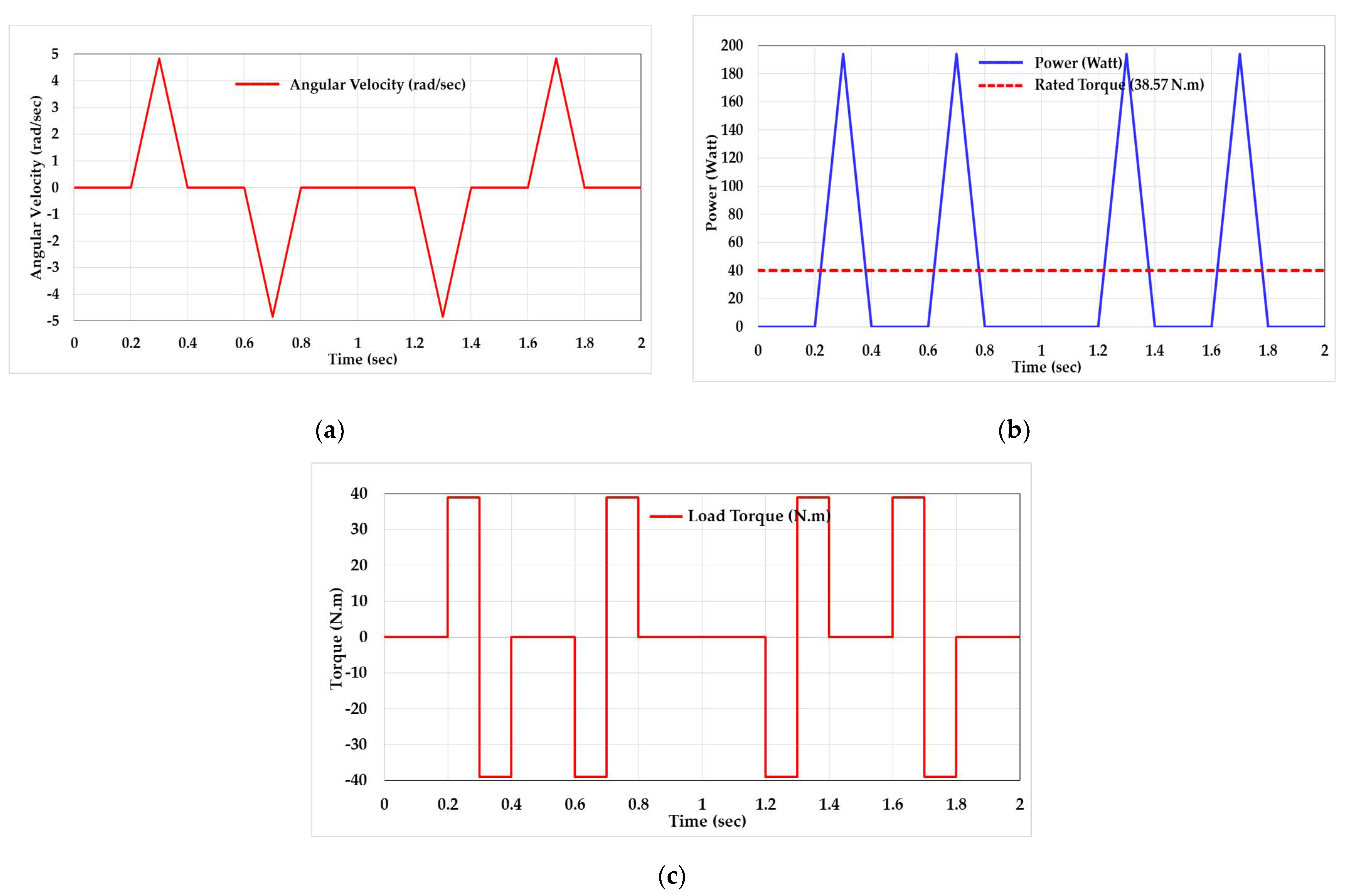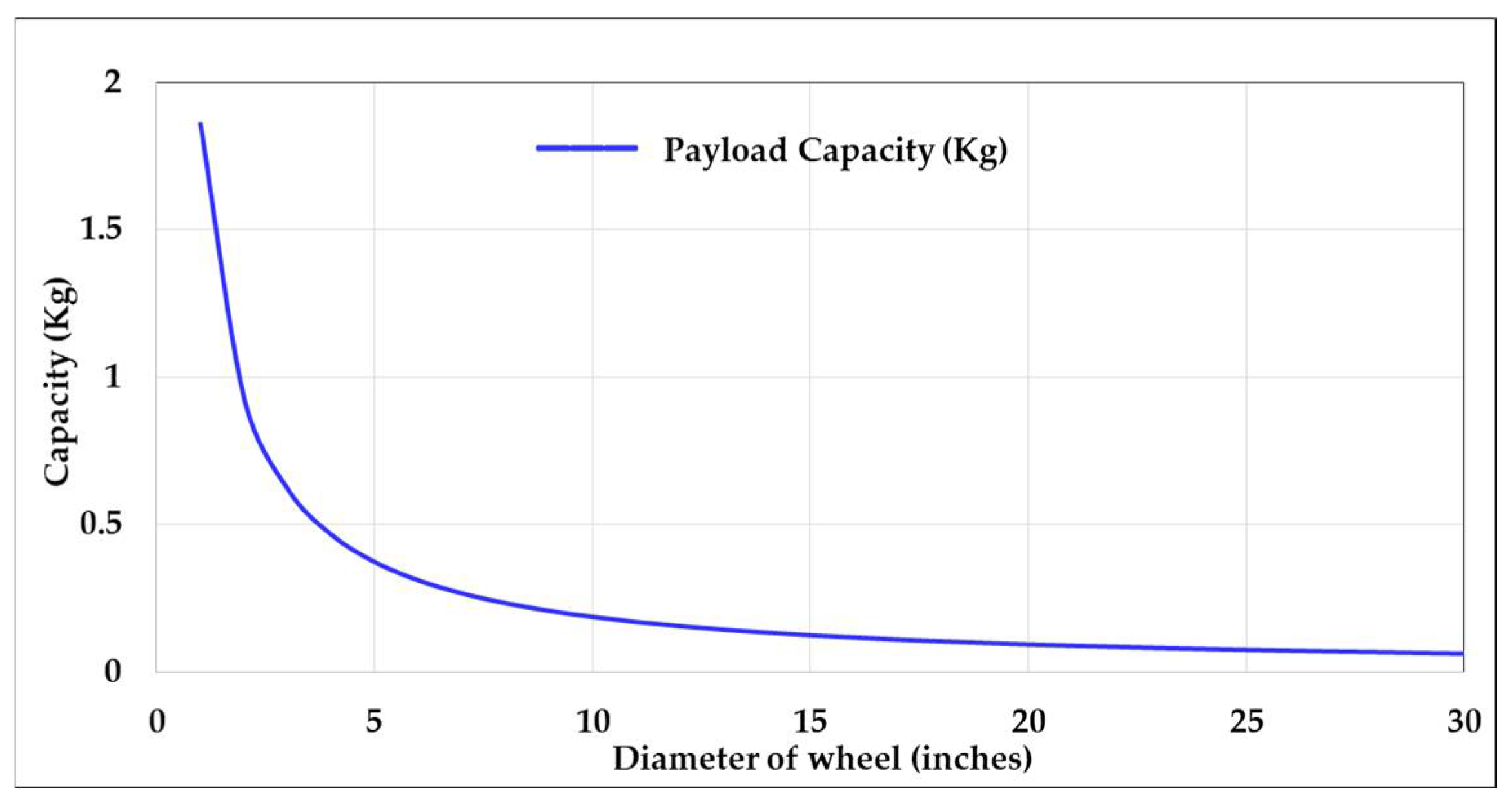Motor Parametric Calculations for Robot Locomotion †
Abstract
:1. Introduction
2. Methodology
2.1. Mathematical Representation
2.2. Proposed Working Criteria
3. Results and Discussion
3.1. Graphical Representation of the Equations
3.2. Results from Proposed Working Criteria
4. Conclusions
Author Contributions
Funding
Institutional Review Board Statement
Informed Consent Statement
Data Availability Statement
Acknowledgments
Conflicts of Interest
References
- Zhang, H.-Y.; Lin, W.-M.; Chen, A.-X. Path Planning for the Mobile Robot: A Review. Symmetry 2018, 10, 450. [Google Scholar] [CrossRef] [Green Version]
- Roos, F.; Johansson, H.; Wikander, J.J.M. Optimal selection of motor and gearhead in mechatronic applications. Mechatronics 2006, 16, 63–72. [Google Scholar] [CrossRef]
- Choi, C.; Jung, S.; Kim, S.; Lee, J.; Choe, T.; Chung, S.; Park, Y. A motor selection technique for designing a manipulator. In Proceedings of the 2007 International Conference on Control, Automation and Systems, Seoul, Korea, 17–20 October 2007. [Google Scholar]
- Cusimano, G.J.M.; Theory, M. Choice of motor and transmission in mechatronic applications: Non-rectangular dynamic range of the drive system. Mech. Mach. Theory 2015, 85, 35–52. [Google Scholar] [CrossRef]
- Ling, Z.; Zhou, L.; Guo, S.; Zhang, Y. Equivalent circuit parameters calculation of induction motor by finite element analysis. IEEE Trans. Magn. 2014, 50, 833–836. [Google Scholar]
- Van de Straete, H.J.; Degezelle, P.; De Schutter, J.; Belmans, R.J. Servo motor selection criterion for mechatronic applications. IEEE Trans. Magn. 1998, 3, 43–50. [Google Scholar] [CrossRef]
- Lyutarevich, A.; Dolinger, S.; Plankov, A. Development of permanent magnet motor calculation technique. In Proceedings of the 2016 2nd International Conference on Industrial Engineering, Applications and Manufacturing (ICIEAM), Chelyabinsk, Russia, 19–20 May 2016. [Google Scholar]
- Gönüllü, M.K. Development of a Mobile Robot Platform to Be Used in Mobile Robot Research. Master’s Thesis, Middle East Technical University, Ankara, Turkey, 2013. [Google Scholar]
- Neobotix Robots. Available online: https://www.neobotix-robots.com/products/mobile-manipulators/mobile-robot-mm-400 (accessed on 25 January 2022).
- Robotnik. Available online: https://robotnik.eu/products/mobile-manipulators/rb-vulcano-en/ (accessed on 25 January 2022).
- NASA Science Mars Exploration Program. Available online: https://mars.nasa.gov/msl/spacecraft/rover/summary/ (accessed on 25 January 2022).
- NASA Science Mars 2020 Mission Perseverance Rover. Available online: https://mars.nasa.gov/mars2020/spacecraft/rover/wheels/ (accessed on 25 January 2022).





Publisher’s Note: MDPI stays neutral with regard to jurisdictional claims in published maps and institutional affiliations. |
© 2022 by the authors. Licensee MDPI, Basel, Switzerland. This article is an open access article distributed under the terms and conditions of the Creative Commons Attribution (CC BY) license (https://creativecommons.org/licenses/by/4.0/).
Share and Cite
Ali, A.H.; Kazmi, S.M.H.; Poonja, H.A.; Khan, H.; Shirazi, M.A.; Uddin, R. Motor Parametric Calculations for Robot Locomotion. Eng. Proc. 2022, 20, 8. https://doi.org/10.3390/engproc2022020008
Ali AH, Kazmi SMH, Poonja HA, Khan H, Shirazi MA, Uddin R. Motor Parametric Calculations for Robot Locomotion. Engineering Proceedings. 2022; 20(1):8. https://doi.org/10.3390/engproc2022020008
Chicago/Turabian StyleAli, Abdullah Haider, Syed Murtaza Hassan Kazmi, Hasnain Ali Poonja, Humayun Khan, Muhammad Ayaz Shirazi, and Riaz Uddin. 2022. "Motor Parametric Calculations for Robot Locomotion" Engineering Proceedings 20, no. 1: 8. https://doi.org/10.3390/engproc2022020008
APA StyleAli, A. H., Kazmi, S. M. H., Poonja, H. A., Khan, H., Shirazi, M. A., & Uddin, R. (2022). Motor Parametric Calculations for Robot Locomotion. Engineering Proceedings, 20(1), 8. https://doi.org/10.3390/engproc2022020008










